A Novel Multi-Dimensional Analysis Approach to Teaching and Learning Analytics in Higher Education
Abstract
:1. Introduction
- Allow teachers/senior management to quickly access vital teaching and learning data from sources all in one place;
- Provide relational information to create snapshots of teaching and learning performance for teaching and learning quality improvement;
- Provide the interface for users to analyze different time periods and trends to make future predictions on teaching and learning changes;
- Expand capabilities for deeper insights and more robust analysis of teaching and learning performance;
- Develop visualizations and forward-looking business intelligence from big teaching and learning data;
- Offer “what-if” scenarios to inform practical decisions based on more comprehensive analysis.
2. Literature Review
3. Benchmark of International Practices
4. Methodology and System Design
4.1. Data Source
- (a)
- Student Management under the Banner ERP System;
- (b)
- Learning Management System (Moodle);
- (c)
- Data from Institutional Surveys (for example, Term-End Course Teaching and Learning Evaluation (CTLE) Survey raw data, First Year Student Learning Experience Survey data, Final Year Student Learning Experience Survey data, Employers Survey data, and Alumni Survey, etc.);
- (d)
- Data of professional development activities.
4.2. Scope and Multidimensional Data Model
4.3. Data Warehouse Architecture
- (1)
- Determine system requirements and obtain appropriate values from program leaders and senior management; acquire a diverse set of user requirements from various academic departments in order to obtain the necessary data and reports; identify data sources such as owner, availability, constraints, and quality;
- (2)
- Design and build a high-performing multi-dimensional model in the database, according to the data from the user requirements in step 1, i.e., SQL Server in this study, according to the user requirements collected from step 1;
- (3)
- Collaborate with data source owners and IT teams to create database schema and the ETL program for extracting, transforming, and loading source data into the data warehouse system;
- (4)
- Design the data marts and OLAP cubes in the data warehouse and perform complex measurements and calculations based on user requirements;
- (5)
- Develop a dynamic and interactive user interface in Power BI for end-users to explore data via mobile, PC, or other applications (for example, Excel, Power BI);
- (6)
- Launch the System Integration Testing (SIT) and User Acceptance Test (UAT) of the developed solution with end-users and deploy it to the Power BI Cloud;
- (7)
- Review the developed solution and user feedback and continue the dashboard development.
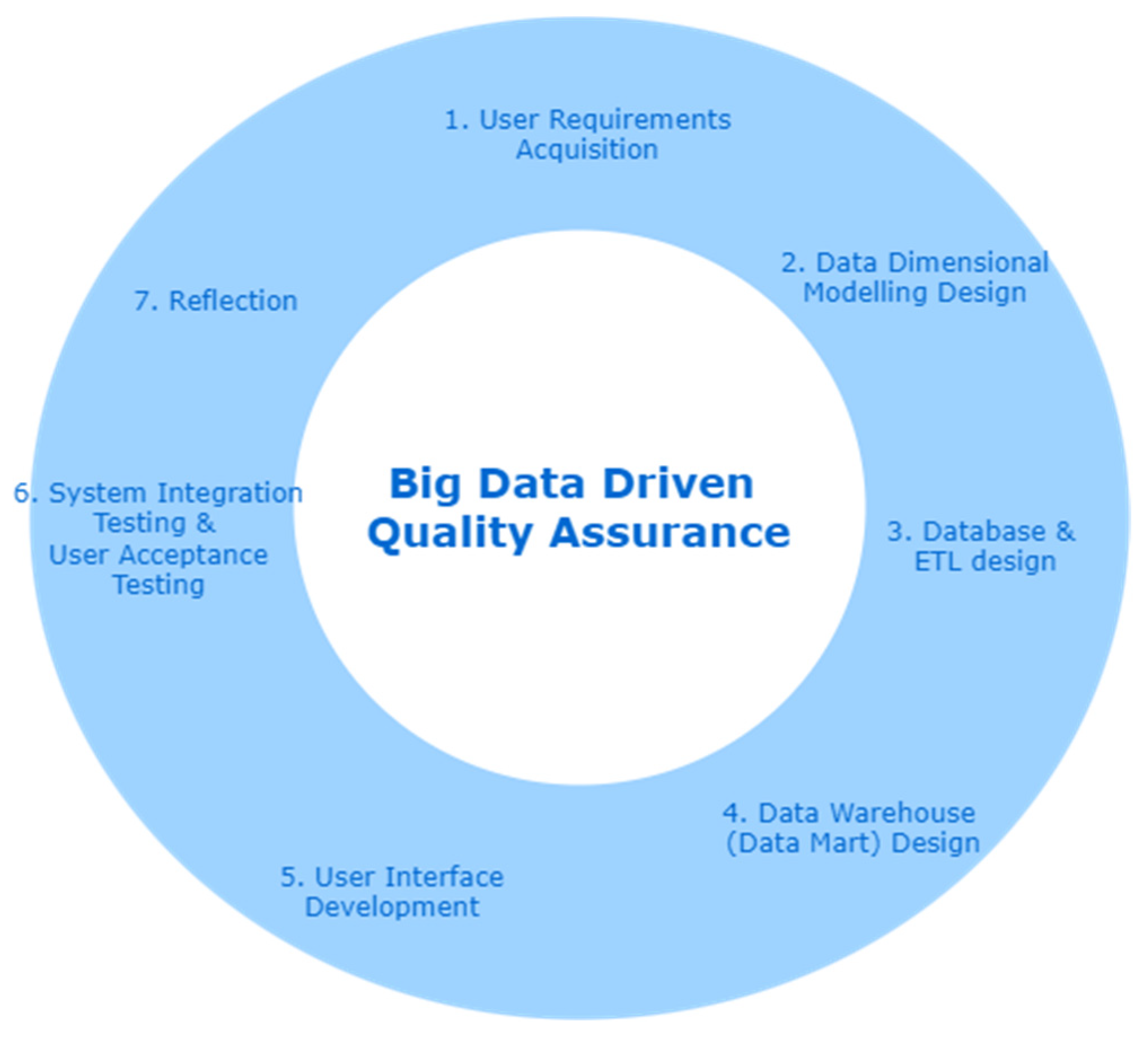
4.4. User Interface
5. Conclusions
Author Contributions
Funding
Institutional Review Board Statement
Informed Consent Statement
Data Availability Statement
Conflicts of Interest
References
- SOLAR. What Is Learning Analytics. Available online: https://www.solaresearch.org/about/what-is-learning-analytics/ (accessed on 1 March 2022).
- Siemens, G. Learning Analytics: The Emergence of a Discipline. Am. Behav. Sci. (Beverly Hills) 2013, 57, 1380–1400. [Google Scholar] [CrossRef] [Green Version]
- Wolfgang, G.; Hendrik, D. Translating Learning into Numbers: A Generic Framework for Learning Analytics. J. Educ. Technol. Soc. 2012, 15, 42–57. Available online: http://www.jstor.org/stable/jeductechsoci.15.3.42 (accessed on 1 March 2022).
- Freitas, S.; Gibson, D.; Plessis, C.; Halloran, P.; Williams, E.; Ambrose, M.; Dunwell, I.; Arnab, S. Foundations of dynamic learning analytics: Using university student data to increase retention. Br. J. Educ. Technol. 2014, 46, 1175–1188. [Google Scholar] [CrossRef] [Green Version]
- Seidel, E.; Kutieleh, S. Using predictive analytics to target and improve first year student attrition. Aust. J. Educ. 2017, 61, 200–218. [Google Scholar] [CrossRef]
- Ali, F.; Ng, S. Moodle Data Retrieval for Educational Data Mining. Int. J. Sci. Eng. Technol. 2015, 4, 523–525. [Google Scholar] [CrossRef] [Green Version]
- Zorrilla, M. Data Warehouse technology for e-learning. In Methods and Supporting Technologies for Data Analysis; Sage Publishing: New York, NY, USA, 2009; Volume 225, pp. 1–20. [Google Scholar]
- Silva, D.; Vieira, M. Using Data Warehouse and Data Mining Resources for Ongoing Assessment of Distance Learning. 2002. Available online: http://citeseerx.ist.psu.edu/viewdoc/summary?doi=10.1.1.104.5146 (accessed on 1 March 2022).
- Zorrilla, M.; Menasalvas, E.; Marín, D.; Mora, E.; Segovia, J. Web usage mining project for improving web-based learning sites. In Proceedings of the International Conference on Computer Aided Systems Theory, Las Palmas de Gran Canaria, Spain, 7–11 February 2005; pp. 205–210. [Google Scholar] [CrossRef]
- Lam, P.; Keing, C.; McNaught, C.; Cheng, K.-F. Monitoring eLearning environments through analyzing web logs of institution-wide eLearning platforms. In Proceedings of the ASCILITE 2006—The Australasian Society for Computers in Learning in Tertiary Education, Sydney, Australia, 3–6 December 2006; Volume 1. [Google Scholar]
- Govindan, K.; Cheng, T.C.E.; Mishra, N.; Shukla, N. Big data analytics and application for logistics and supply chain management. Transp. Res. Part E Logist. Transp. Rev. 2018, 114, 343–349. [Google Scholar] [CrossRef]
- Chaurasia, S.S.; Frieda Rosin, A. From Big Data to Big Impact: Analytics for teaching and learning in higher education. Ind. Commer. Train. 2017, 49, 321–328. [Google Scholar] [CrossRef]
- Sinaga, A.S.; Girsang, A.S. University Accreditation using Data Warehouse. J. Phys. Conf. Ser. 2017, 801, 12030. [Google Scholar] [CrossRef]
- Viswanath, D.K.; Kusuma, S.; Gupta, S.K. Cloud Computing Issues and Benefits Modern Education. Glob. J. Comput. Sci. Technol. 2012, 7, 508. Available online: https://computerresearch.org/index.php/computer/article/view/508 (accessed on 1 March 2022).
- Ivanović, M.; Klašnja-Milićević, A. Big data and collective intelligence. Int. J. Embed. Syst. 2019, 11, 573–583. [Google Scholar] [CrossRef]
- Ewell, P. Twenty Years of Quality Assurance in Higher Education: What’s Happened and What’s Different? Qual. High. Educ. 2010, 16, 173–175. [Google Scholar] [CrossRef]
- Santoso, L.W. Data Warehouse with Big Data Technology for Higher Education. Procedia Comput. Sci. 2017, 124, 93–99. [Google Scholar] [CrossRef]
- Aljawarneh, I.M. Design of a data warehouse model for decision support at higher education: A case study. Inf. Dev. 2016, 32, 1691–1706. [Google Scholar] [CrossRef]
- Bassil, Y. A Data Warehouse Design for a Typical University Information System. arXiv 2012, arXiv:1212.2071. [Google Scholar]
- Arthur, L. From performativity to professionalism: Lecturers’ responses to student feedback. Teach. High. Educ. 2009, 14, 441–454. [Google Scholar] [CrossRef]
- Shah, M.; Sid Nair, C. The changing nature of teaching and unit evaluations in Australian universities. Qual. Assur. Educ. 2012, 20, 274–288. [Google Scholar] [CrossRef]
- Boring, A.; Ottoboni, K.; Stark, P. Student Evaluations of Teaching (Mostly) Do Not Measure Teaching Effectiveness. Sci. Res. 2016. [Google Scholar] [CrossRef]
- Kumaladewi, N.; Sugiarti, Y. Design analysis of data warehouse for lecturer performance evaluation (Case study: Faculty of science and technology UIN Jakarta). In Proceedings of the 2016 4th International Conference of Cyber IT Service Management, Bandung, Indonesia, 26–27 April 2016; pp. 1–6. [Google Scholar]
- Pérez-Pérez, Y.M.; Rosado-Gómez, A.A.; Puentes-Velásquez, A.M. Application of business intelligence in the quality management of higher education institutions. J. Phys. Conf. Ser. 2018, 1126, 12053. [Google Scholar] [CrossRef]
- Vieira, C.; Parsons, P.; Byrd, V. Visual learning analytics of educational data: A systematic literature review and research agenda. Comput. Educ. 2018, 122, 119–135. [Google Scholar] [CrossRef]
- Marengo, A.; Pagano, A.; Barbone, A. Data mining methods to assess student behavior in adaptive e-learning processes. In Proceedings of the 2013 Fourth International Conference on e-Learning Best Practices in Management, Design and Development of e-Courses: Standards of Excellence and Creativity, Washington, DC, USA, 7–9 May 2013; pp. 303–309. [Google Scholar] [CrossRef]
- Jayakody, J.; Perera, I. Enhancing competencies of less-able students to achieve learning outcomes: Learner aware tool support through Business intelligence. In Proceedings of the 2016 IEEE International Conference on Teaching, Assessment, and Learning for Engineering (TALE), Bangkok, Thailand, 7–9 December 2016; pp. 154–160. [Google Scholar]
- Daniel, A.; Pablo, G.; Luis, H.-I.; David, F. Educational Warehouse: Modular, Private and Secure Cloudable Architecture System for Educational Data Storage, Analysis and Access. Appl. Sci. 2021, 11, 806. [Google Scholar] [CrossRef]
- Neamah, A. Adoption of Data Warehouse in University Management: Wasit University Case Study. J. Phys. Conf. Ser. 2021, 1860, 012027. [Google Scholar] [CrossRef]
- Yu, X. The Application of Data Warehouse in Teaching Management in Colleges and Universities. J. Phys. Conf. Ser. 2021, 1738, 012090. [Google Scholar] [CrossRef]
- Jayashree, G.; Priya, C. Comprehensive guide to implementation of data warehouse in education. In Intelligent Computing and Innovation on Data Science; Peng, L.H., Son, G., Balaganesh, S.D., Eds.; Springer: Singapore, 2020; pp. 1–8. [Google Scholar]
- Harper College, Institutional Effectiveness Dashboard. Available online: https://www.harpercollege.edu/leadership/accountability/iem/index.php (accessed on 1 March 2022).
- University of Illinois Chicago. Student Data Book Dashboards. Available online: https://oir.uic.edu/data/student-data/data-book-dashboards-2/ (accessed on 1 March 2022).
- UOCs Diego. Graduate Student Experience in the Research University (gradSERU) Results. Available online: https://ir.ucsd.edu/grad/surveys/gradseru/gradseru-results.html (accessed on 1 March 2022).
- TMCC. General Education Assessment. Available online: https://www.tmcc.edu/institutional-research/data-dashboards/institutional-effectiveness/general-education-assessment (accessed on 1 March 2022).
- University of Tennessee at Chattanooga. Institutional Dashboard: General Education. Available online: https://www.utc.edu/academic-affairs/planning-evaluation-and-institutional-research/institutional-dashboards/general-education (accessed on 1 March 2022).
- NJIT. Student Experience/Satisfaction Survey Reports. Available online: https://www.njit.edu/oie/student-experiencesatisfaction-survey-reports (accessed on 1 March 2022).
- USD. Student Satisfaction Dashboard. Available online: https://www.usd.edu/institutional-research/student-satisfaction-dashboard (accessed on 1 March 2022).
- Buffalo State, SUNY Student Opinion Survey. Available online: https://institutionaleffectiveness.buffalostate.edu/suny-student-opinion-survey (accessed on 1 March 2022).
- Qingyun, L.; Zihao, L.; Jie, H.; Huimin, M. Quality Assurance for Performing Arts Education: A Multi-Dimensional Analysis Approach. Appl. Sci. 2022, 12, 4813. [Google Scholar] [CrossRef]
- Chen, H.; Chiang, R.H.L.; Storey, V.C. Business Intelligence and Analytics: From Big Data to Big Impact. MIS Q. 2012, 36, 1165–1188. [Google Scholar] [CrossRef]
- Database Guide. What Is OLTP? Available online: https://database.guide/what-is-oltp/#:~:text=OLTP%20(Online%20Transactional%20Processing)%20is,a%20large%20number%20of%20users (accessed on 1 March 2022).
- Mahnic, V. Data warehouse for an e-learning platform. In Proceedings of the 14th WSEAS International Conference on Computers, Corfu Island, Greece, 23–25 July 2010. [Google Scholar]
- Anderson, H.M.; Cain, J.J.; Bird, E.R. Online Student Course Evaluations: Review of Literature and a Pilot Study. Available online: https://www.semanticscholar.org/paper/Online-Student-Course-Evaluations-%3A-Review-of-and-a-Anderson-Cain/99fa9c23abdae1871db9690af1d427e10e5a32ff (accessed on 1 March 2022).
- Lingnan University. Term-End Course Teaching and Learning Evaluation (CTLE) Policy and Guidelines. Available online: https://www.ln.edu.hk/itsc/services/learning-and-teaching-services/ctle (accessed on 1 March 2022).

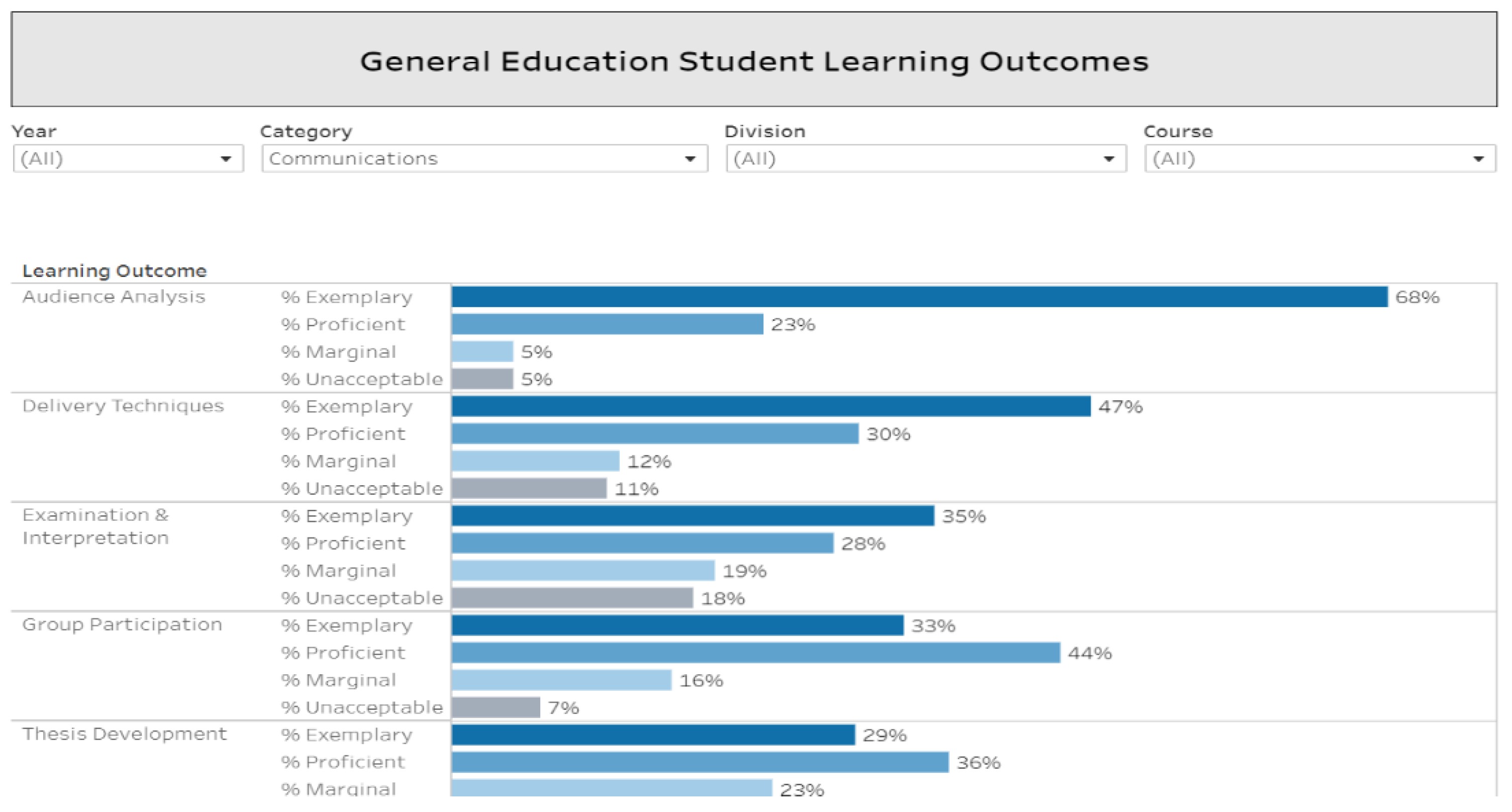
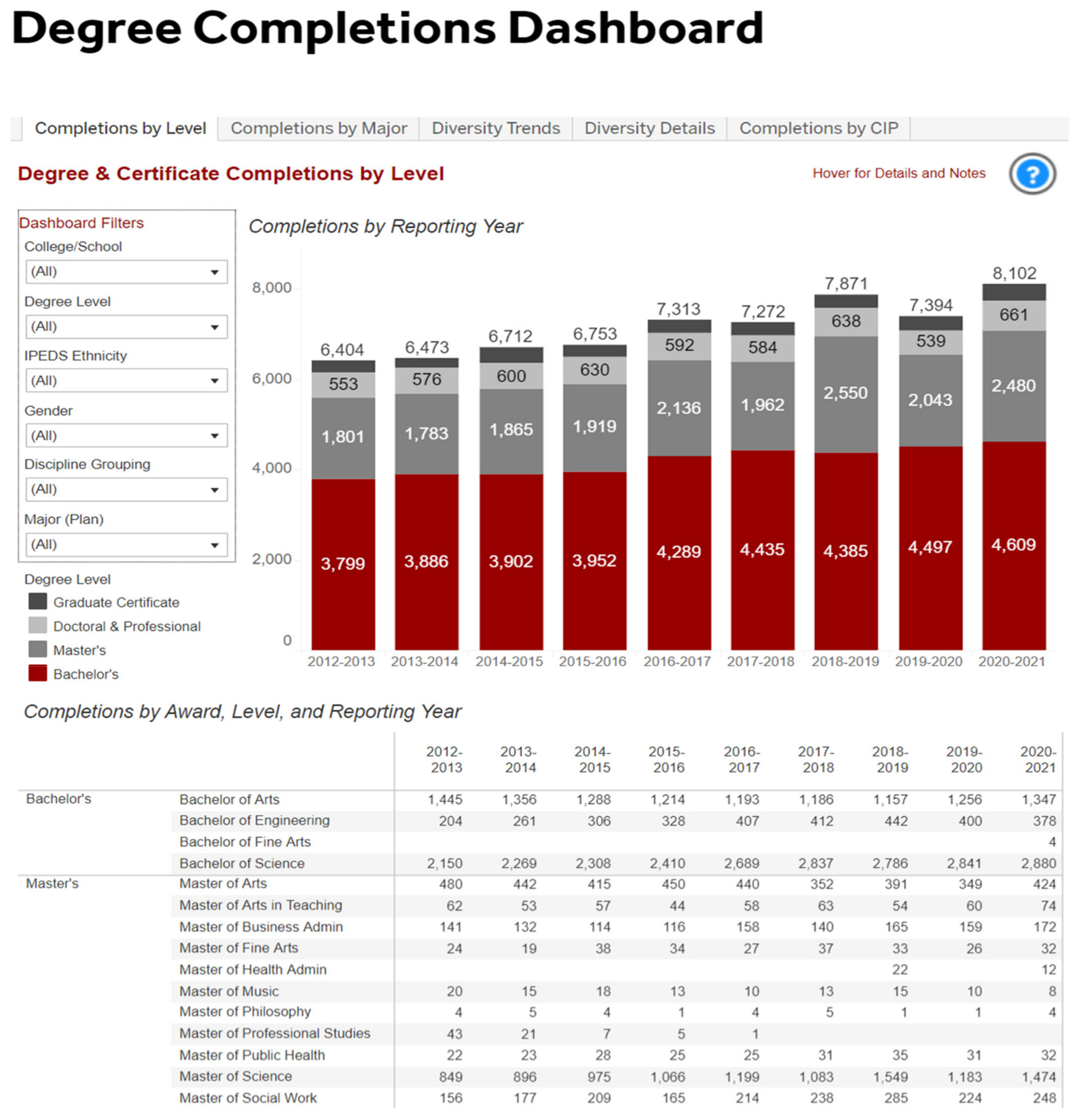
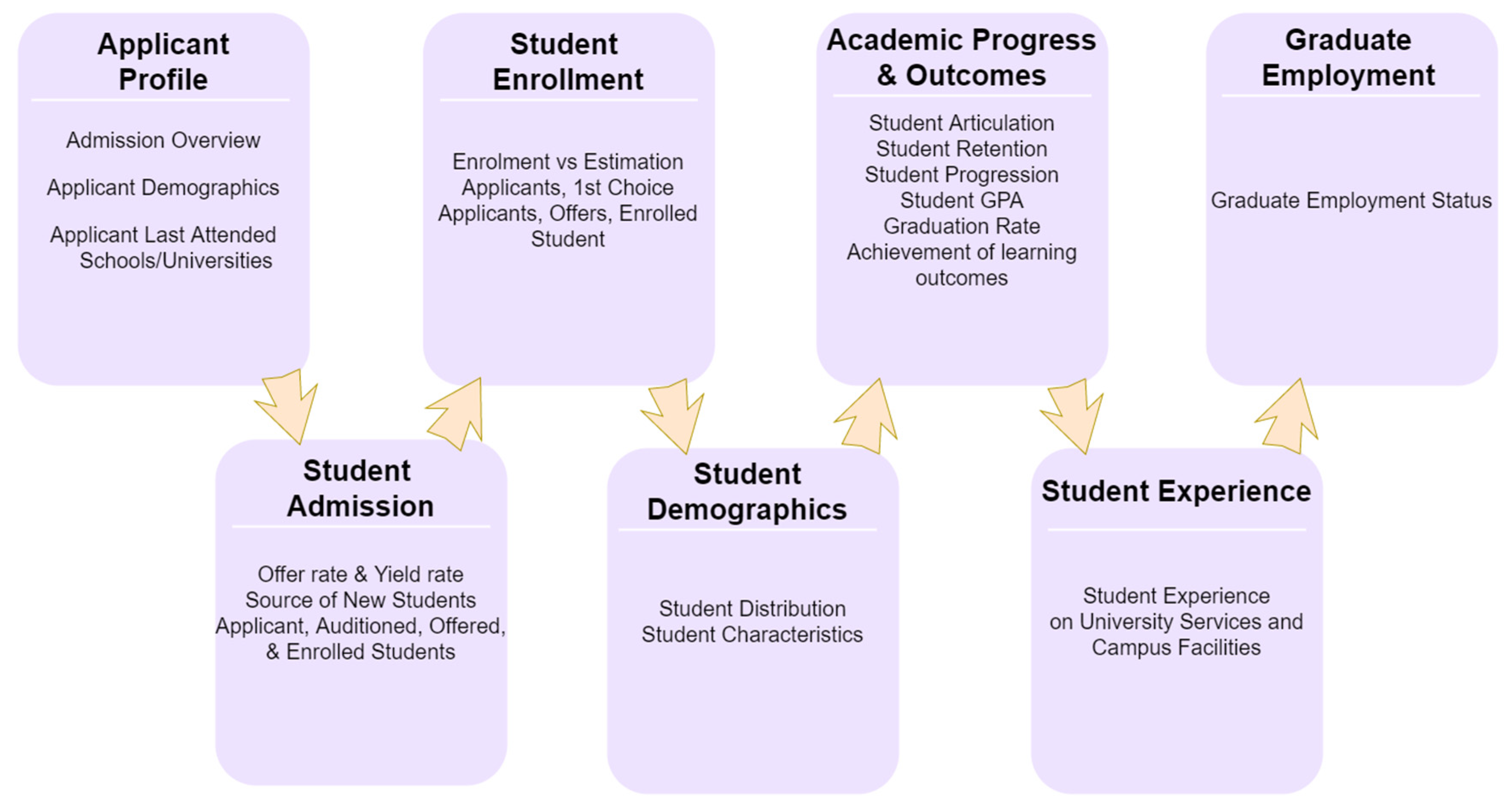
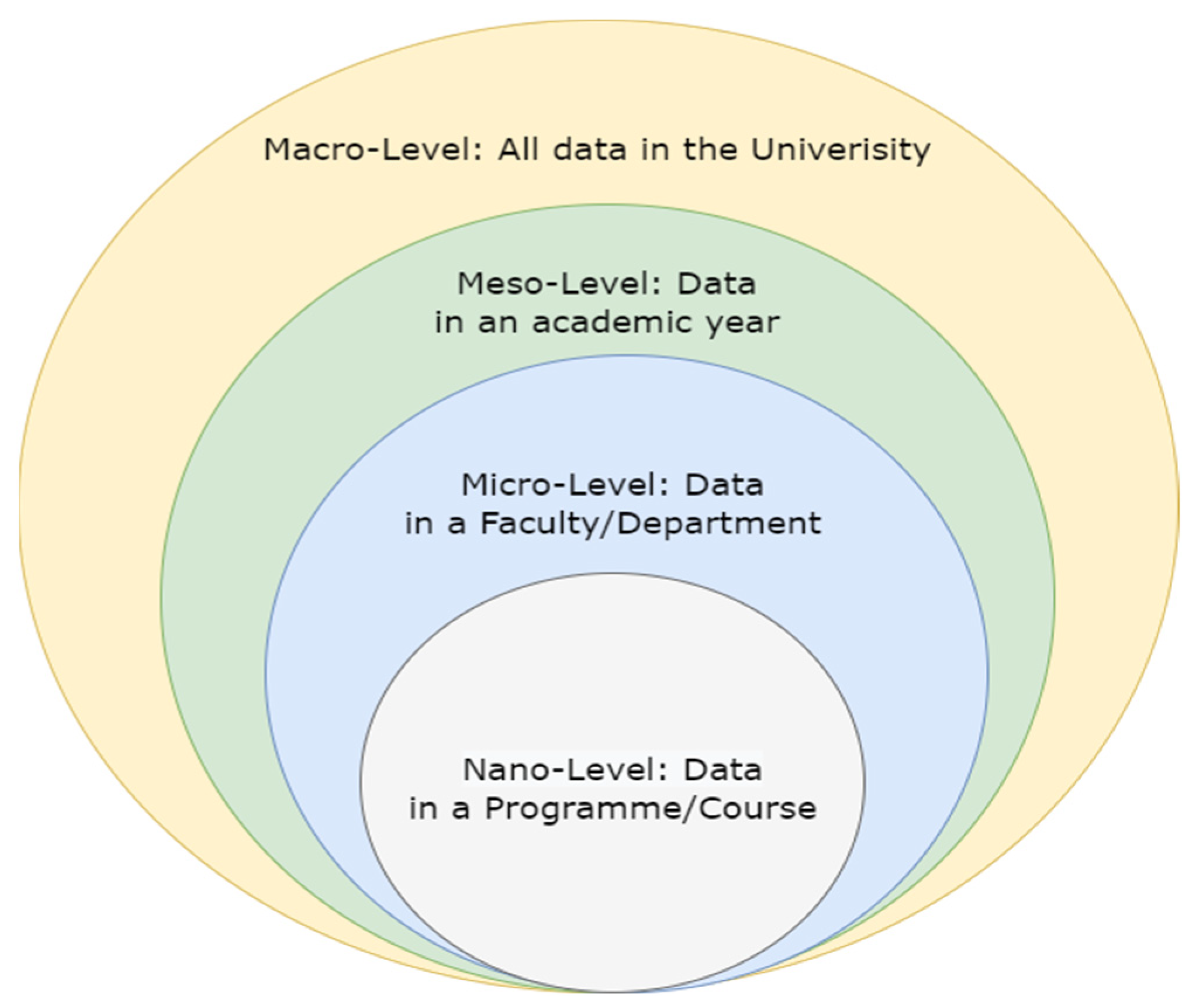
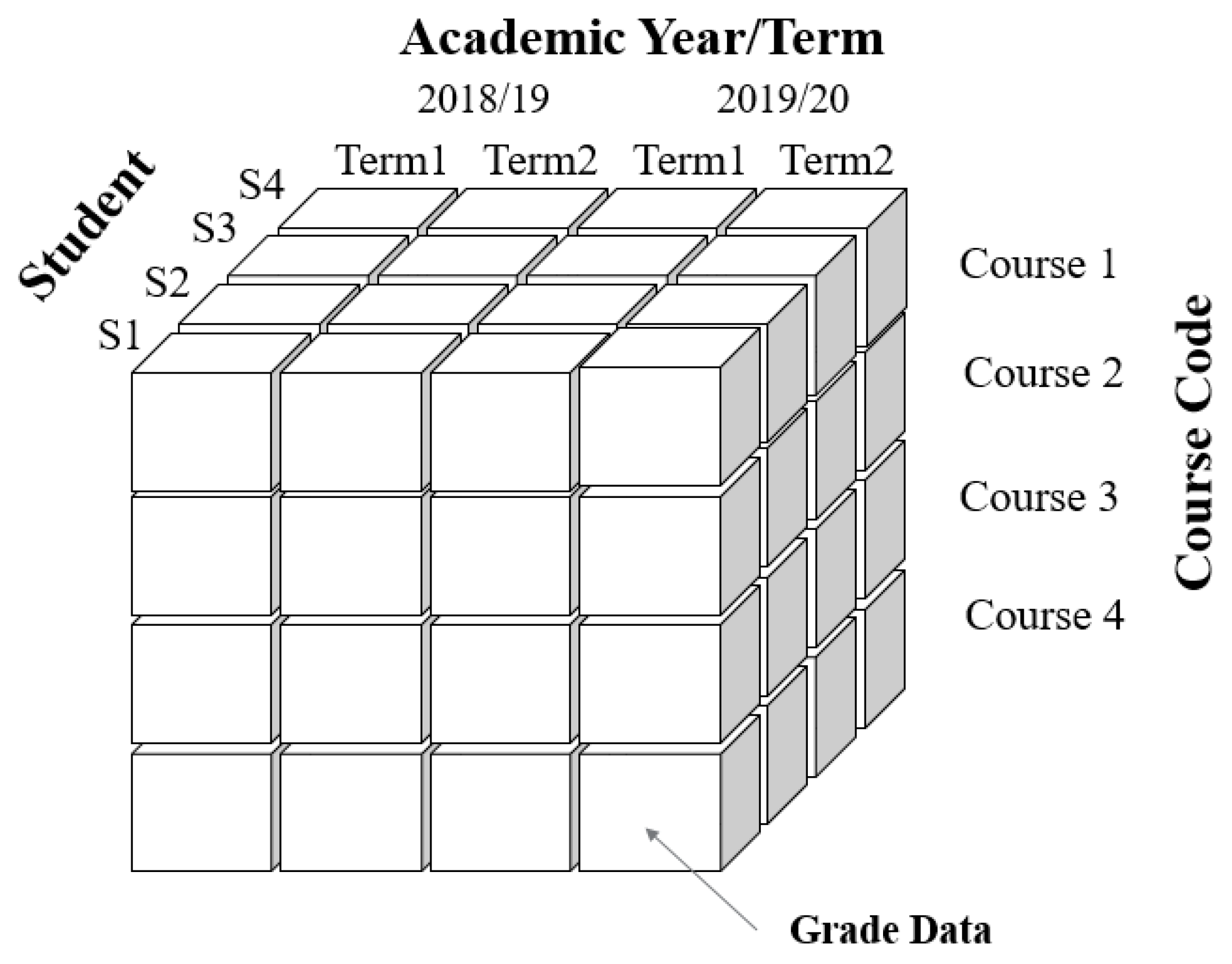

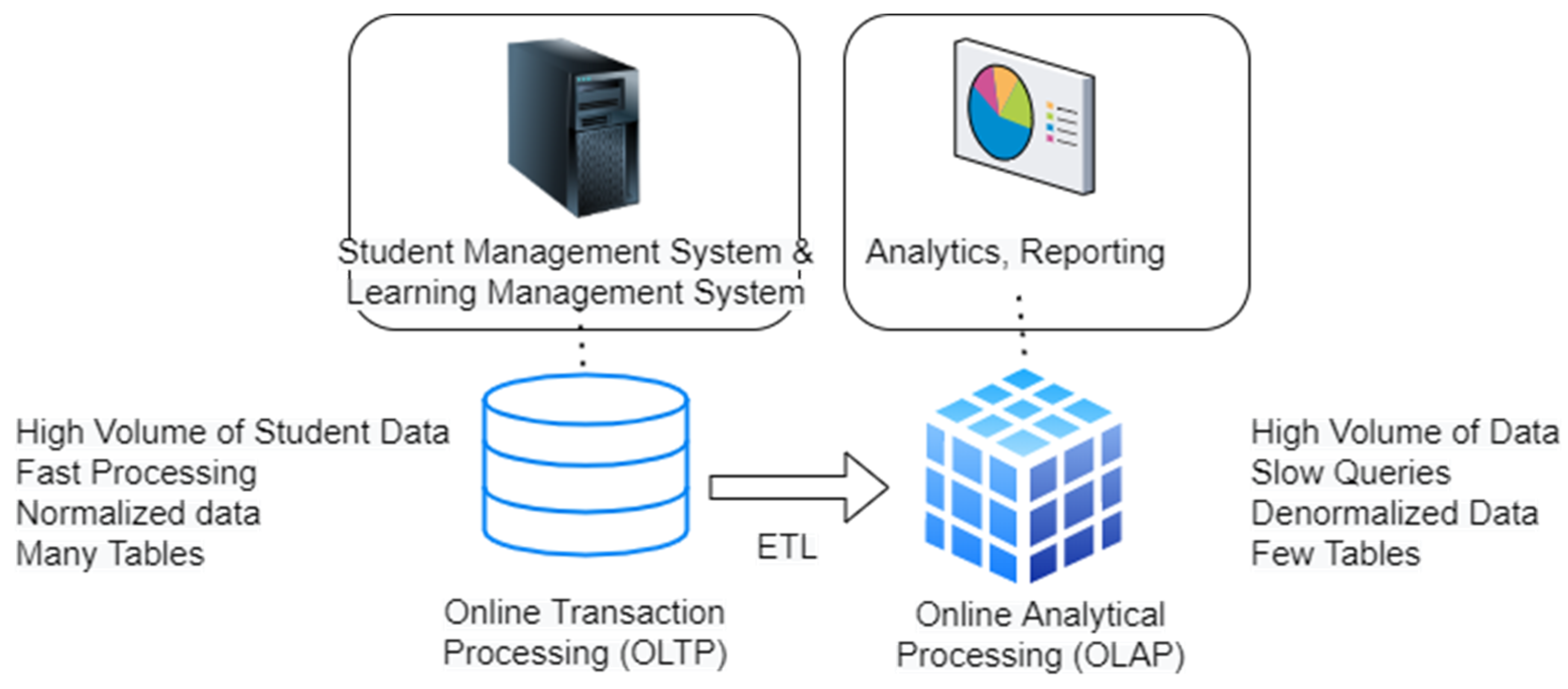

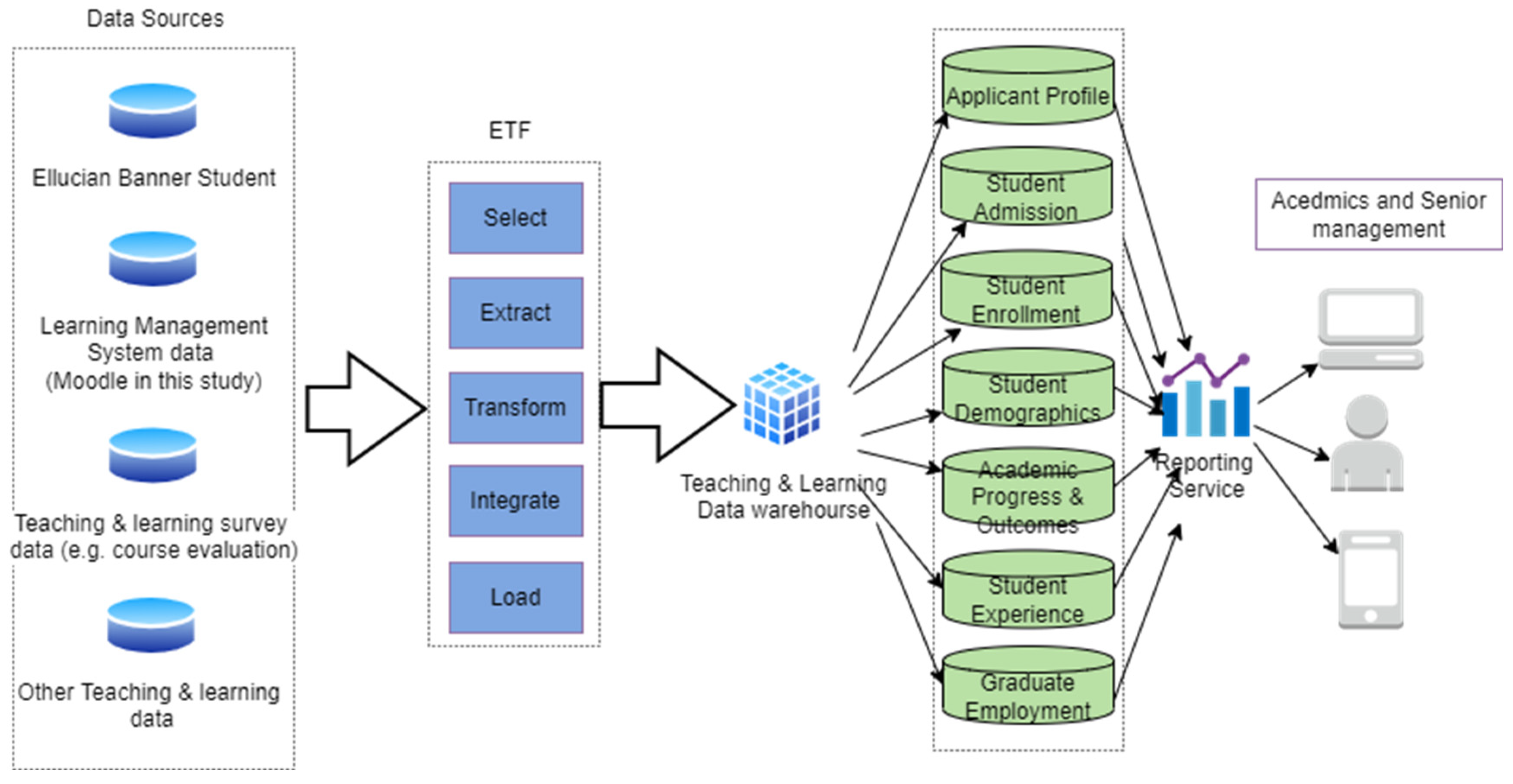
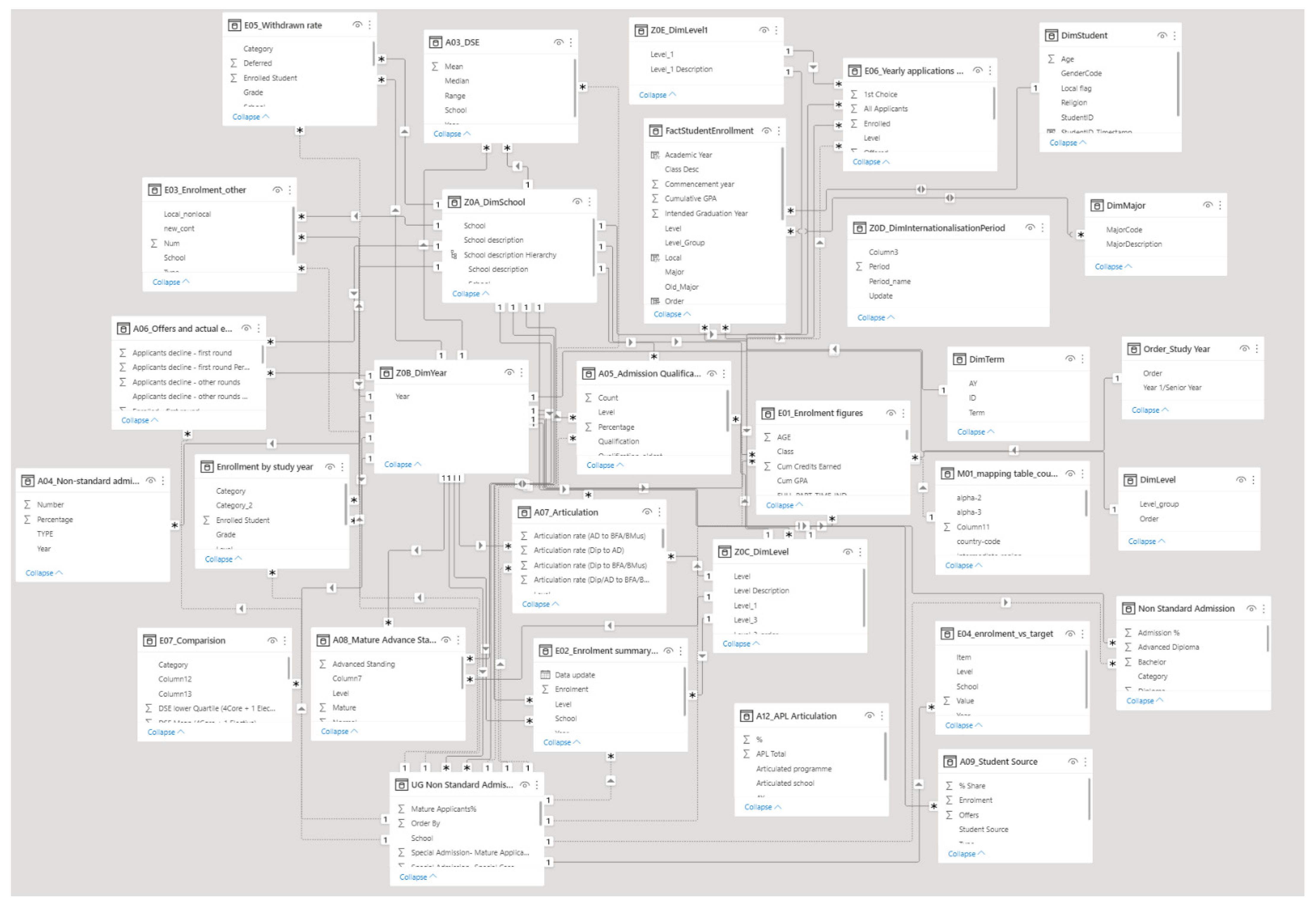
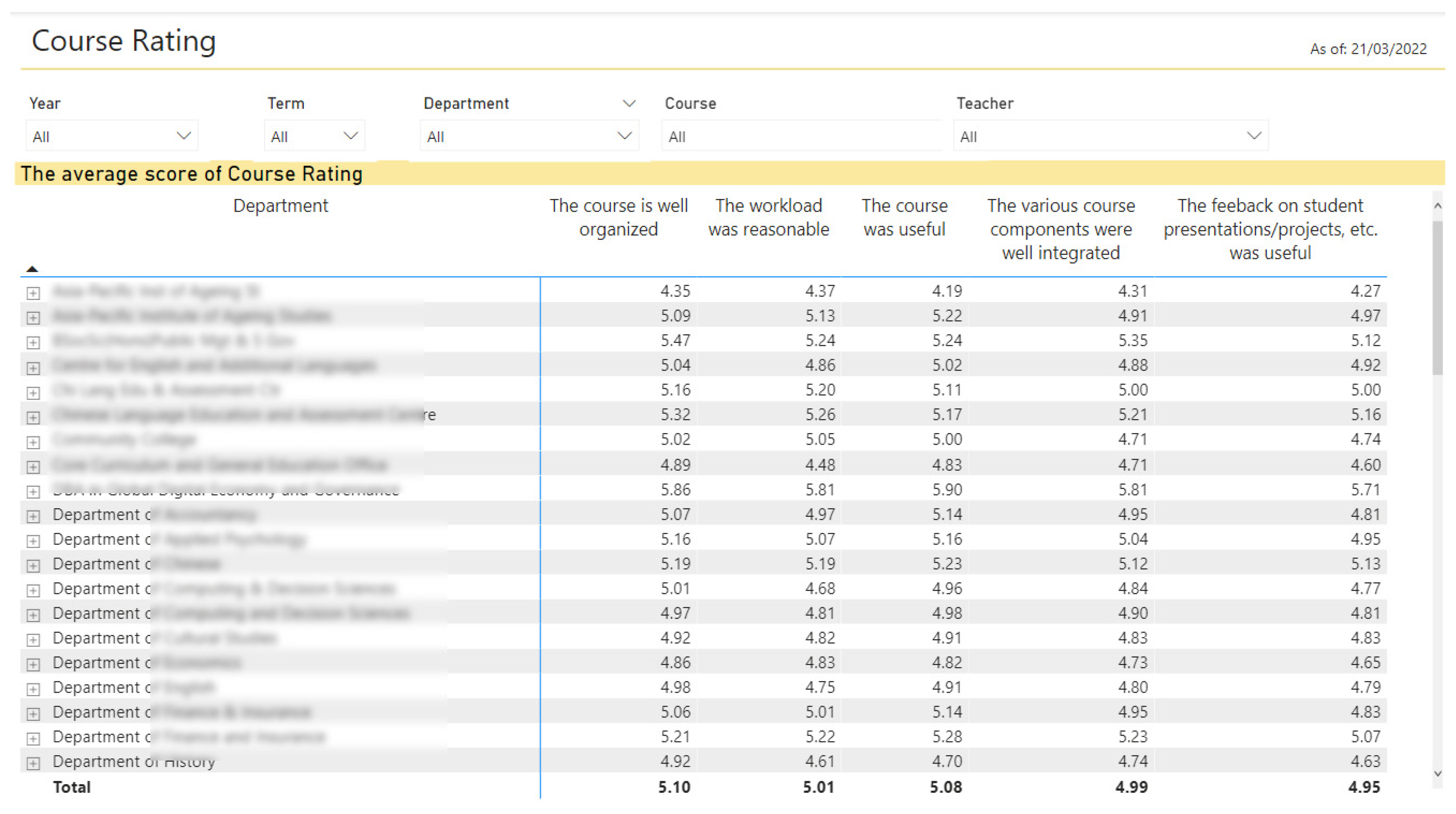
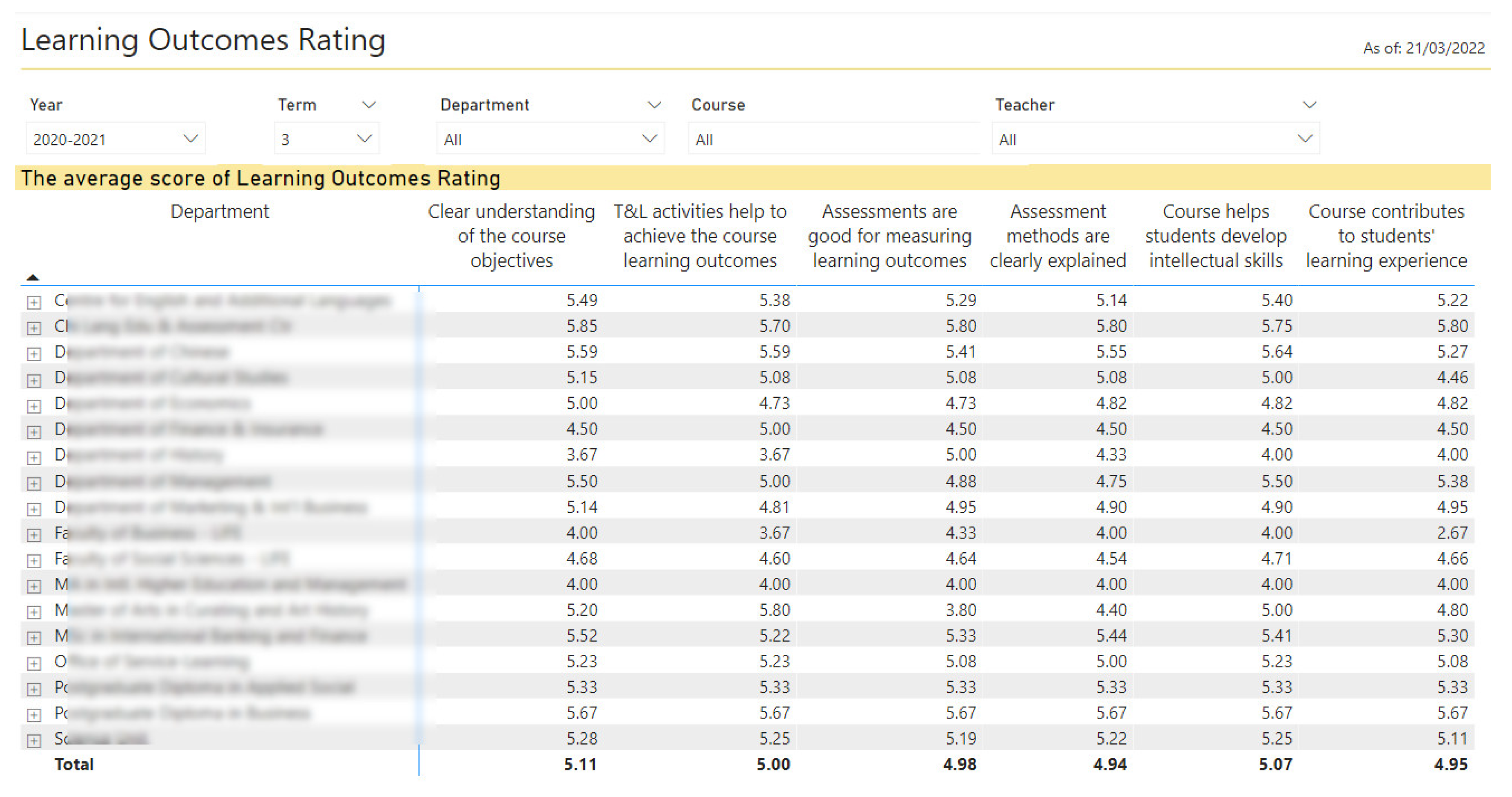
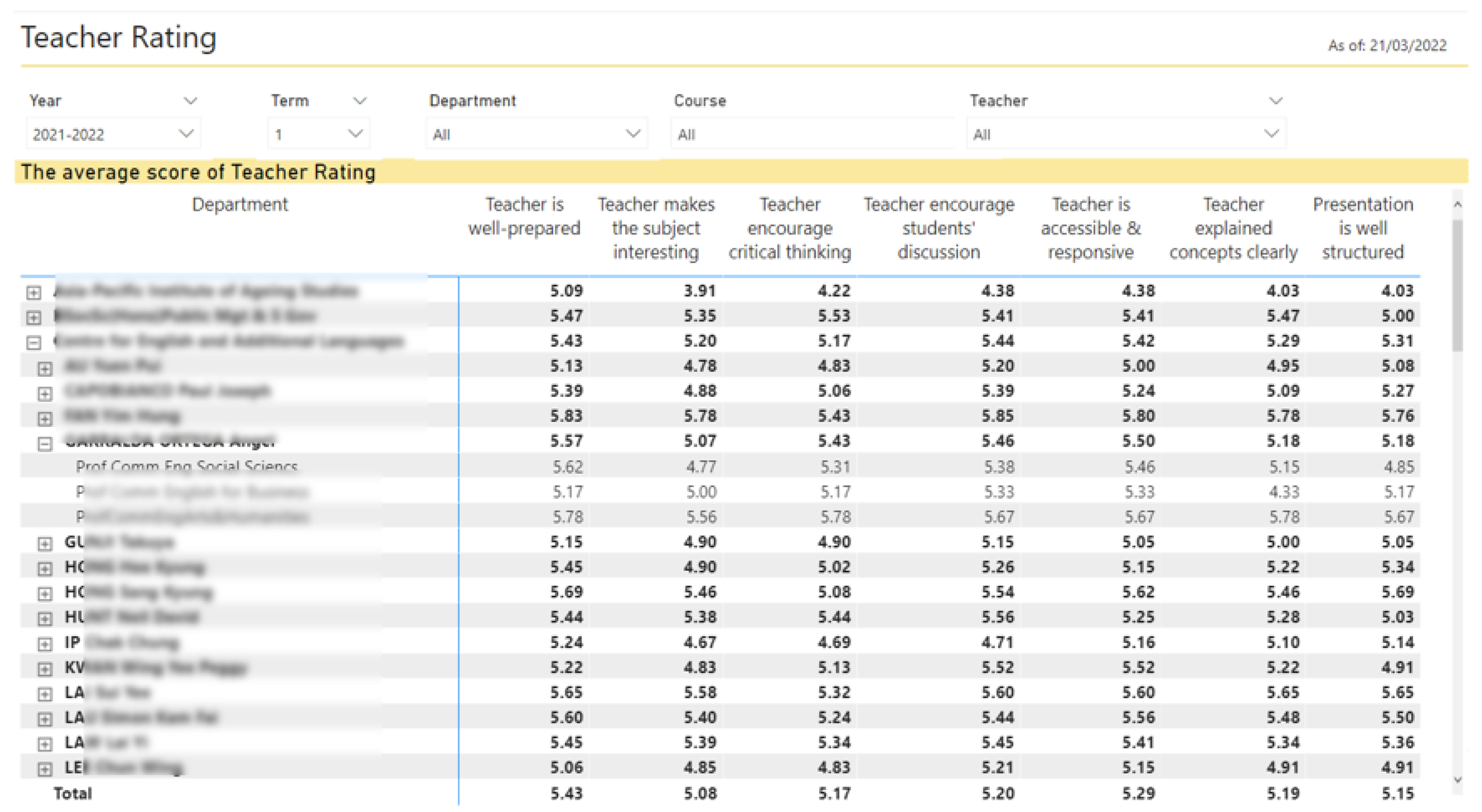
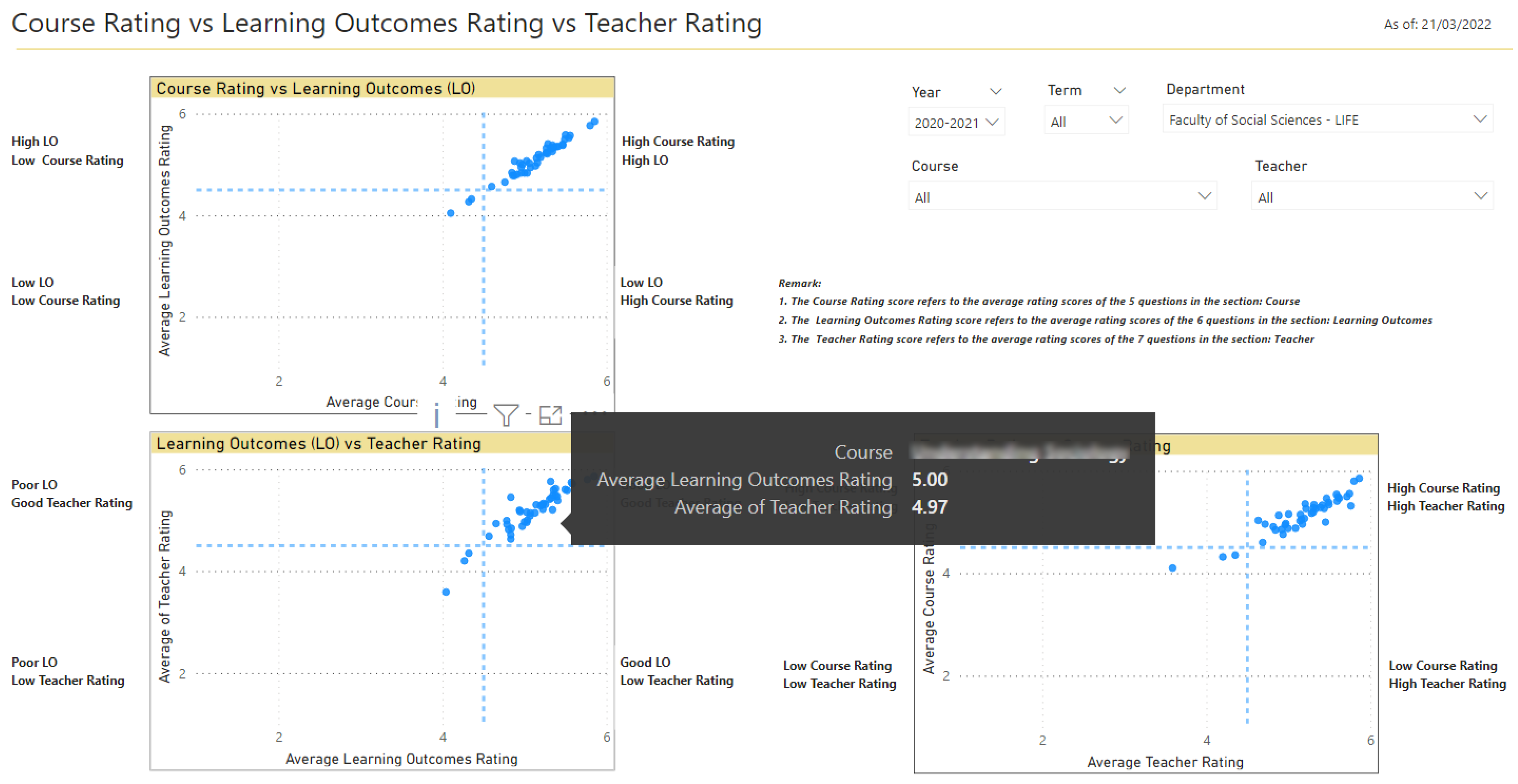
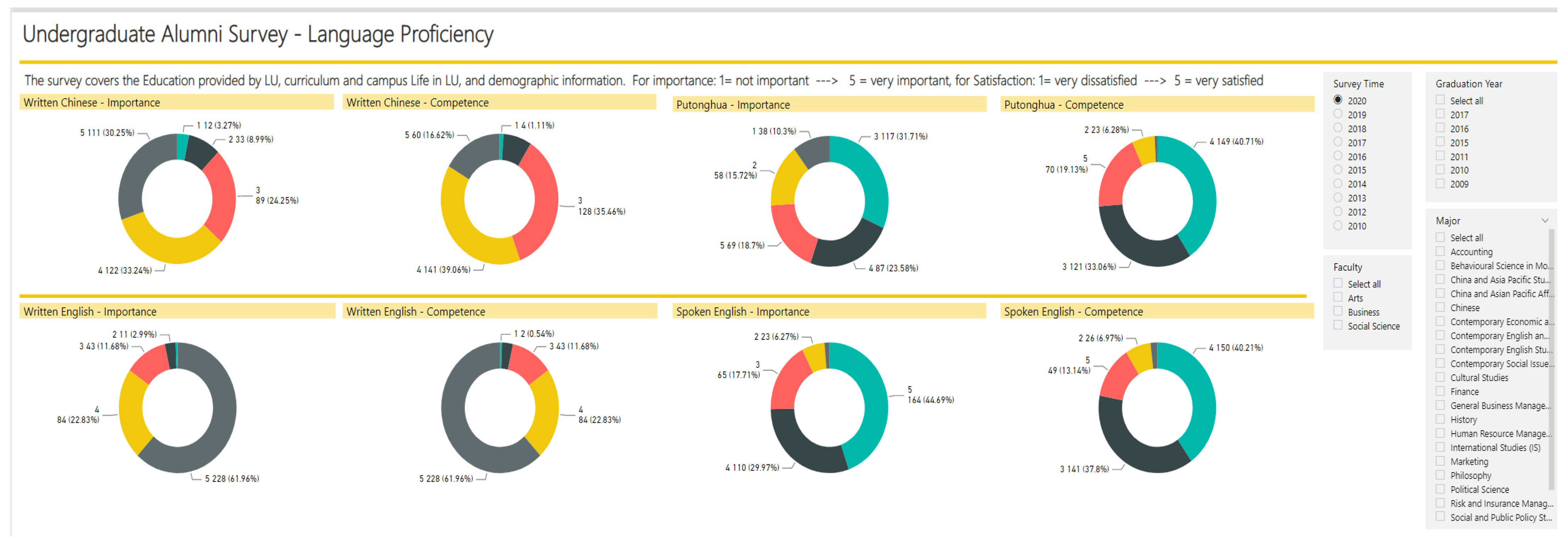
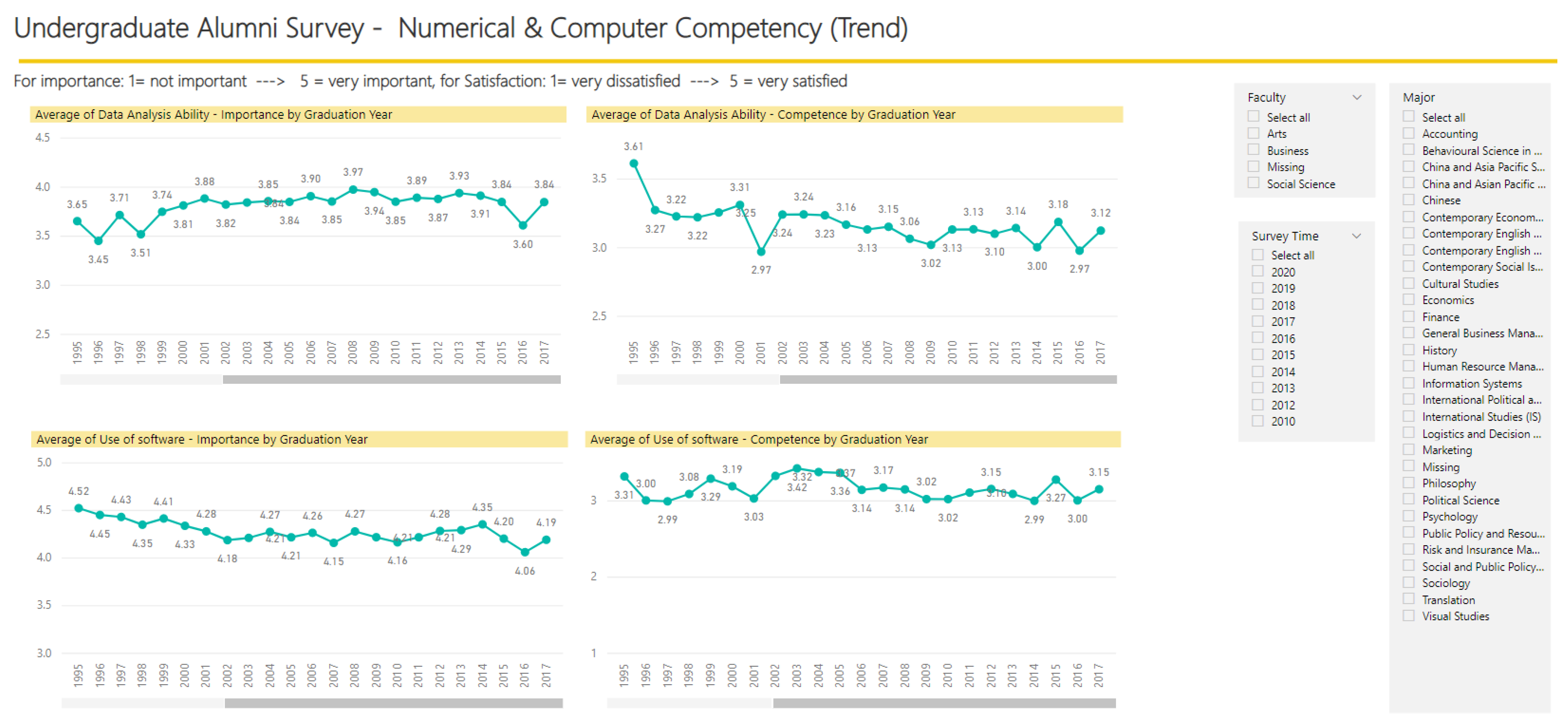
Publisher’s Note: MDPI stays neutral with regard to jurisdictional claims in published maps and institutional affiliations. |
© 2022 by the authors. Licensee MDPI, Basel, Switzerland. This article is an open access article distributed under the terms and conditions of the Creative Commons Attribution (CC BY) license (https://creativecommons.org/licenses/by/4.0/).
Share and Cite
Li, Q.; Duffy, P.; Zhang, Z. A Novel Multi-Dimensional Analysis Approach to Teaching and Learning Analytics in Higher Education. Systems 2022, 10, 96. https://doi.org/10.3390/systems10040096
Li Q, Duffy P, Zhang Z. A Novel Multi-Dimensional Analysis Approach to Teaching and Learning Analytics in Higher Education. Systems. 2022; 10(4):96. https://doi.org/10.3390/systems10040096
Chicago/Turabian StyleLi, Qingyun, Peter Duffy, and Zhongyang Zhang. 2022. "A Novel Multi-Dimensional Analysis Approach to Teaching and Learning Analytics in Higher Education" Systems 10, no. 4: 96. https://doi.org/10.3390/systems10040096
APA StyleLi, Q., Duffy, P., & Zhang, Z. (2022). A Novel Multi-Dimensional Analysis Approach to Teaching and Learning Analytics in Higher Education. Systems, 10(4), 96. https://doi.org/10.3390/systems10040096




